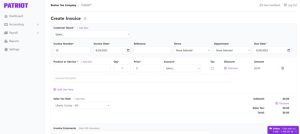
Professionals who use Macs when working at small and medium-size businesses have intriguing software preferences, according to insights from a new Setapp Mac application survey. The survey findings from Setapp — MacPaw’s Kyiv, Ukraine-based application subscription service provider — could influence the way you use and purchase Mac apps. Let’s consider how three changes have shifted how Mac users address their software needs.
Jump to:
Software purchasing behaviors have changed
I used to think choosing and buying software was fairly straightforward. When purchasing applications, my process used to be simple: Determine the best option for my needs, often the market leading program or its closest competitor, and purchase the corresponding license.
If the original equipment manufacturer versions were available, those typically proved less expensive than retail or direct purchases, but OEM licenses can usually only be used upon the machine with which they are purchased.
Considering I, like many users, typically keep new computers in production for four years, that didn’t pose a problem. After a few years, updated versions of the programs became available. I’d then update my edition by purchasing a new OEM license when I bought a new Mac.
Then three things happened: First, Apple rolled out its App Store, which simplified purchasing, tracking and even updating software applications; second, Apple doubled-down on a commitment to develop and maintain easy to learn and impressively capable software solutions — such as Mail, Messages, Pages, Numbers and Keynote — for free on Macs; and third, software subscriptions were introduced, and these are in many cases becoming the norm.
The Setapp Mac apps survey says…
Where do Mac users collect information about macOS software options?
Some 52% of respondents said Apple’s App Store is where they learn about Mac apps. Social media was the next most-popular source at 43%, although respondents said they did not place as much trust in social media.
Instead, more than 85% of respondents trust the App Store, YouTube, podcasts, newsletters, colleagues, friends or other professionals’ recommendations. I tend to distrust social media, too, favoring colleague recommendations and client feedback.
How many programs do Mac users install on their Apple computers?
According to the survey, the number of total installed apps on respondents’ Macs increased from 31 in 2021 to 37 this year. However, the number of apps used daily changed only slightly: 13 compared to 12 in the previous year.
SEE: The Complete Limited Edition Mac Bundle (TechRepublic Academy)
The fewer Mac apps you have installed, the better you can secure a machine and limit the time required to download and install updates. The number of Mac programs you require ultimately depends upon the professional responsibilities you fulfill and the type of work you regularly complete. Whenever possible, using a single app for multiple purposes helps minimize the number of needed apps.
The survey also revealed 10 out of 13 apps used daily by Mac users are installed by default on Macs. That finding is intriguing. Consider: More than 75% of the apps Mac users turn to every day are pre-installed. The result must surely be reliance upon third-party software providers decreases.
What are the most-used Mac apps?
Of the native Apple programs included with macOS, the Safari web browser (68%) and Messages app (65%) are the most-used programs. That’s a surprise to me — I would have bet Mail is used more often than Messages, but maybe I’m dating myself.
Photos (59%) and Mail (57%) are the next two most-used apps. After that, Calendar (47%), FaceTime (45%) and Notes (44%) are the most popular native tools (Figure A).
Figure A

When it comes to daily office productivity software, Microsoft seemingly enjoys a stranglehold with Word, Excel and PowerPoint.
Those Microsoft Office programs, along with the Google Chrome browser and Adobe apps, are subsequently the most frequently installed Mac programs according to Setapp’s survey, as reflected in the word cloud diagram in Figure B.
Figure B

What are the most important considerations for Mac users when selecting a new app?
Based on the survey, the answer is features (47%) and security (45%). A Mac application’s price (38%) and its corresponding user experience and interface (37%) are the next most-important factors, followed closely by privacy and personal data management practices (35%). An application designer’s reputation (17%) was ranked almost last, greater only than Other (1%).
Many respondents feel that automatic updates (46%) and a desire not to overload their Macs with superfluous programs (43%) are important purchase considerations. Some 55% of respondents feel more strongly that high-quality Mac apps cost money, and they are ready to pay a corresponding price (Figure C).
Figure C

Some 42% of survey respondents indicate they prefer cross-platform apps. When purchasing a program, respondents prefer to receive all versions, including web and iOS editions. This does not surprise me: I find it simplifies licensing and software administration, particularly within SMBs, where multiple seats and licenses are typically in play.
When purchasing new Mac apps, the average cost a Mac user spends per year is $139. Respondents also average possessing nine paid apps on their Mac computers. Setapp notes that not all respondents differentiated between the apps they purchase and the amount they spend on in-app purchases.
While I wouldn’t expect users to have to purchase the same apps year after year, the total of $139 is lower than I anticipated. Programs I’ve come to depend upon, such as iA Writer ($49.99 for Mac and another $49.99 for iOS and iPadOS) and Pixelmator Pro ($39.99) quickly add up.
Still, with an average purchase total of $139 for Mac apps, the typical business pro using a Mac should find such a budget permits purchasing a number of reliable apps, which may not require paying to update again for years — though I fear that trend is changing.
What are Mac users’ preferences for lifetime app licenses vs subscriptions?
I purchased the Affinity Photo Pro photo-editing Mac app in August 2019 for $49.99 and thought I was set. Imagine my surprise when I saw Affinity Photo Pro 2 hit the App Store this year for $69.99.
Although it’s only fair that developers continue to get paid, I’m learning the days of purchasing an application once within the App Store and being done are likely over. I’ve already adjusted to the fact I simply need to pay Microsoft a yearly fee for access to its productivity suite, and when professional needs require, I do the same with Adobe’s Creative Cloud suite. That doesn’t mean other Mac users appreciate having to purchase software subscriptions, though.
Some 36% of respondents said they prefer one-time lifetime licenses. Only 17% prefer annual subscriptions, with monthly subscriptions favored even less (13%).
SEE: Setapp’s Mac software service confirms app subscriptions are here to stay (TechRepublic)
While I no longer defer paying for a Mac app I use, that’s not universally true. Setapp’s Mac app survey confirms Mac users resist purchasing an application if the app is expensive, free alternatives are available or they’re uncertain they’ll need to regularly use the program.
Sometimes free apps suffice, but experience has taught me developers often place premium features such as the ability to print or make edits to a file behind a paywall. Once I know I need a software app and it becomes necessary to fulfill daily functions, I’ve learned paying the license fee speeds my workflows and proves more effective than continuing to try to save funds by leveraging a free but limited app or repeatedly seeking trial versions.
How important is M1/M2 chip support when buying Mac apps?
The fact that Macs are increasingly powered by Apple Silicon is impacting app selection, too. Most survey respondents indicate it is very important (55%) or somewhat important (35%) that the Mac apps they purchase boast native M1 and M2 chip support.
Setapp’s Mac app survey methodology
The Setapp survey was conducted online. More than 600 Mac users located in the U.S. aged 18 or older responded. Some 45% of respondents said they use a MacBook Pro, while MacBook Airs (34%), Mac Pros (23%), iMacs (20%), Mac minis (6%) and Mac Studios (6%) composed the remainder.
Source of Article



